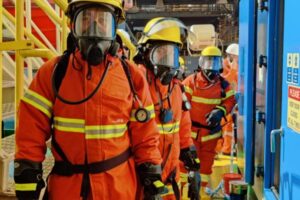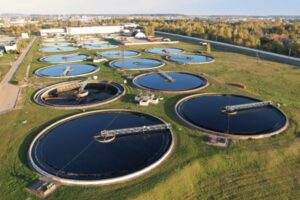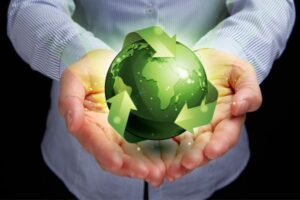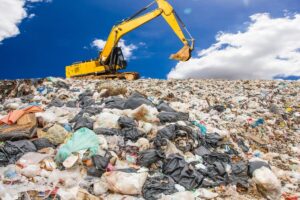Our planet is confronting an unprecedented climate crisis, driven by an escalating concentration of greenhouse gases in our atmosphere. While carbon dioxide (CO₂) traditionally garners the most attention, another, even more insidiously potent warming agent is rapidly accumulating: methane (CH₄). A substantial and often overlooked portion of this powerful gas originates from an everyday activity – the decomposition of organic matter within landfills. However, a revolutionary paradigm shift in waste management, spearheaded by innovative waste-to-energy (WtE) technologies, is now offering a critical, multifaceted pathway to not only mitigate methane emissions but actively contribute to a more stable and sustainable global climate.

The Silent Threat: Understanding the Methane Menace
Methane, while naturally occurring, is the primary component of natural gas, but when released uncontrolled into the atmosphere, it functions as an incredibly efficient heat-trapping greenhouse gas. Its Global Warming Potential (GWP) is significantly higher than that of CO₂ over a shorter, critical timeframe. Over a 20-year period, methane is roughly 80 times more potent than carbon dioxide in terms of its warming impact, making its aggressive reduction an urgent imperative for immediate climate action and slowing near-term warming trends.
Landfills across the USA are unfortunately major anthropogenic (human-caused) sources of methane. The process begins when organic materials—such as food scraps, yard trimmings, paper, textiles, and wood—are buried deep within landfills. Deprived of oxygen in these anaerobic conditions, specialized bacteria begin to break down the organic matter. This anaerobic decomposition produces what’s known as landfill gas (LFG), a potent mixture typically composed of approximately 50% methane and 50% carbon dioxide. The U.S. Environmental Protection Agency (EPA) consistently identifies landfills as the third-largest source of human-related methane emissions in the United States, underscoring their substantial and persistent contribution to global warming.
While some modern landfills employ gas collection systems, these systems are inherently imperfect, often capturing only a fraction of the methane produced due to leaks, cover integrity issues, and the slow diffusion of gas through waste. This uncontrolled methane release represents both a significant environmental hazard and a monumental squandering of potential energy. Beyond climate implications, fugitive methane can also pose local environmental and safety concerns, contributing to unpleasant odors, impacting local air quality with other volatile organic compounds (VOCs), and even presenting explosion risks if concentrations accumulate in nearby structures.
Waste-to-Energy: A Proactive, Integrated Climate Solution
The most direct and fundamentally effective strategy to prevent landfill methane emissions is to intercept and process organic waste *before* it ever reaches a landfill. By diverting these materials from burial, we fundamentally eliminate the anaerobic conditions under which methane forms. This is precisely where modern, advanced waste-to-energy (WtE) solutions, like those pioneered and implemented by Clean Stream Fuels across the USA, play a truly transformative role.
Clean Stream Fuels leverages two primary, cutting-edge technologies that are engineered to sustainably process diverse organic waste streams. These systems eliminate their methane-generating potential while simultaneously creating valuable renewable resources, forming a critical component of a circular economy:
-
Hydrothermal Liquefaction (HTL): Transforming Wet Waste into Renewable Biocrude
Our Hydrothermal Liquefaction (HTL) process stands as a groundbreaking thermochemical conversion technology specifically designed for highly wet organic waste streams. This includes not only municipal sewage sludge and diverse food waste (from residential, commercial, and industrial sources) but also challenging agricultural residues, brewery waste, and even algae. Unlike conventional biomass conversion methods that require energy-intensive and costly pre-drying of feedstocks, HTL directly processes these moisture-rich materials, making it exceptionally efficient for otherwise difficult-to-treat wastes.
Under carefully controlled, moderate temperatures (typically 250-370°C) and high pressures (10-25 MPa) in the presence of water (which acts as both a solvent and a reactant), HTL rapidly transforms these complex organic wastes into a stable, energy-dense biocrude oil. This biocrude is chemically remarkable; with a lower oxygen content than bio-oils produced by other methods (like pyrolysis), it is more stable and amenable to further upgrading. It can be refined into renewable gasoline, diesel, and even jet fuels, seamlessly integrating with, and directly displacing, fossil fuels within existing refinery infrastructure or dedicated biorefineries. The solid byproduct, hydrochar, is also valuable, capable of being valorized for beneficial uses such as a soil amendment to enhance fertility and potentially sequester carbon, or as a renewable solid fuel (bio-coal).
-
Anaerobic Digestion (AD): Harnessing Biogas as Renewable Natural Gas (RNG)
Complementing the HTL system, our Anaerobic Digestion (AD) systems provide another powerful and essential solution for a variety of organic wastes. These include agricultural manures, green waste from landscaping, specific food processing wastes, and the organic fraction of municipal solid waste. AD functions by allowing complex microbial communities—including hydrolytic bacteria, acidogenic bacteria, acetogenic bacteria, and ultimately methanogenic archaea (as discussed in our previous article on microorganisms)—to break down organic matter in a tightly controlled, oxygen-free environment. Crucially, unlike open landfills where methane escapes freely, AD systems are meticulously engineered to capture all the biogas produced.
This captured raw biogas, typically 50-75% methane, undergoes a rigorous cleaning and upgrading process. Impurities like hydrogen sulfide and carbon dioxide are removed, and the gas is dried to become pipeline-quality Renewable Natural Gas (RNG). This RNG is chemically identical to conventional fossil natural gas and can be seamlessly injected into existing natural gas grids, used as a cleaner vehicle fuel for transportation fleets, or converted into renewable electricity and heat via dedicated generators. Furthermore, the nutrient-rich digestate byproduct from AD serves as an excellent organic biofertilizer, reducing reliance on synthetic fertilizers, improving soil health, and contributing to nutrient cycling in sustainable agriculture.

Beyond Methane: A Holistic Climate Impact and Environmental Stewardship
The multifaceted benefits of waste-to-energy extend far beyond the crucial prevention and capture of methane. These integrated solutions offer a comprehensive suite of environmental advantages that contribute significantly to broader climate change mitigation and foster overall sustainability:
- Substantial Fossil Fuel Displacement & Greenhouse Gas Emission Offsets: By generating significant quantities of renewable biocrude and Renewable Natural Gas, Clean Stream Fuels’ systems directly replace the need for fossil fuels. This reduces the demand for the extraction, processing, and combustion of coal, oil, and conventional natural gas, leading to a substantial net reduction in overall greenhouse gas emissions (CO₂e) across the energy sector. A single WtE facility can offset the CO₂ emissions equivalent to thousands of cars annually.
- Reduced Transportation Emissions & Fuel Consumption: Diverting organic waste from landfills, especially those often located far from urban and industrial centers, drastically reduces the need for long-haul transportation of waste. This translates directly into lower fuel consumption by waste hauling trucks and a significant reduction in associated greenhouse gas emissions and local air pollutants.
- Resource Circularity & Waste Hierarchy Advancement: Waste-to-energy exemplifies the principles of a circular economy. By transforming discarded materials that would otherwise be landfilled into valuable energy and products, we move waste management up the waste hierarchy. This reduces the demand for virgin resources and the energy-intensive processes associated with their extraction, refining, and manufacturing, closing material loops and maximizing resource efficiency.
- Minimized Landfill Footprint & Land Preservation: Less waste going to landfills means less valuable land is required for disposal sites. This preserves land that can be used for housing, agriculture, natural habitats, or recreational areas, preventing the environmental degradation, groundwater contamination risks, and ongoing management burdens associated with expanding landfill operations.
- Enhanced Local Environmental Quality: Controlled WtE processes are designed with advanced emission controls that capture pollutants, often resulting in lower localized air pollutants and odors compared to uncontrolled landfill gas emissions. Furthermore, integrated wastewater treatment (often a co-benefit of handling wet organic waste) ensures cleaner discharge into waterways or allows for beneficial reuse, protecting aquatic ecosystems.
- Economic Resilience & Green Job Creation: Investing in WtE infrastructure creates local green jobs—from engineers and plant operators to maintenance technicians and logistical support. It also enhances energy security by decentralizing energy production and stabilizes energy costs for municipalities and industries, contributing to broader economic resilience and attracting green investment nationwide.

Clean Stream Fuels: Leading the Charge for a Cleaner Tomorrow, USA
Clean Stream Fuels is at the forefront of implementing these vital, multi-faceted solutions across the USA. By actively partnering with municipalities, industries, and communities, we provide the cutting-edge technology and unparalleled expertise to transform complex environmental challenges into sustainable energy opportunities. Our integrated approach to converting diverse organic waste streams into clean energy and recovering valuable resources directly contributes to national climate goals, drastically reduces reliance on traditional fossil fuels, and builds a more resilient, resource-independent, and sustainable future for all.
The fight against climate change demands innovative, scalable, and actionable solutions. Waste-to-energy is not merely about waste management; it’s about proactively harnessing neglected resources to power our future responsibly and ensuring a healthier planet for generations to come. To learn more about how Clean Stream Fuels can empower your organization to reduce its environmental footprint, become a leader in climate action, and embrace the circular economy, explore our commitment to sustainability or contact our team today.
#WasteToEnergy #MethaneReduction #ClimateChange #RenewableEnergy #Sustainability #CircularEconomy #GreenTechnology


